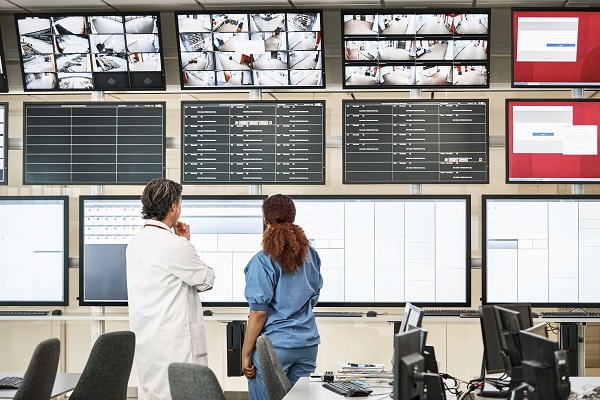*By David Jirku and Ron Rotman
While the pandemic has disrupted life as we know it, there does seem to be an end in sight as vaccination campaigns instill hope for a global recovery.
However, with reports of complicated storage considerations, limited availability, and extended delays, ensuring equal access to the COVID-19 vaccine has proven to be an evolving challenge.
Behind the scenes, intricate and massive scales of network technologies are providing solutions by bridging the gap between healthcare providers, governments, vaccine manufacturers, and communities around the world.
From booking appointments, issuing proof of vaccination, working out the logistics behind transporting and storing the vaccine, or keeping both the vaccine and those who are being injected safe, these networks are what will be powering an inclusive recovery through efficient vaccine administration.
Powering our recovery
The COVID-19 vaccine deployment is a massive undertaking to get the world back on its feet. In fact, the World Health Organization has projected that ensuring equal access to the vaccine is worth more than $153 billion to the world’s 10 major economies in 2021 alone.
When considering the scale and speed of the deployment, network technologies are playing an integral role in supporting the planning, delivery, monitoring, and management of this undertaking. These advanced network technologies are providing reliable connections, timely outreach, secure physical storage, and stronger collaboration between those who are making it happen.
Whether through providing reliable WIFI in field hospitals or keeping patient information secure, these networks are playing a critical role as the world embarks on one of the largest undertakings in modern history. We know that while there is an end in sight, these systems will continue to be pressured until the world becomes vaccinated.
Solutions for success
Some of the largest challenges underway in this deployment have solutions in plain sight. These start at the network level, making it vital for government, healthcare, and retail organizations to keep these crucial networks running as smoothly as possible.
There are some critical considerations to make this happen, including:
Keeping it secure: As with any extreme effort, there are reports of bad actors who are threatening both the overall success and general safety of the vaccine deployment. From phishing scams to supply chain warnings, it’s no surprise that security is front of mind when considering the vaccine rollout.
Constant monitoring, securing the supply chain, defending against cyber-attacks, and ensuring quality control are critical security considerations to keep in mind throughout this deployment. Cameras, cloud-enabled security and IoT sensors can ensure that the deployment is both secure and successful.
Keeping it moving: The COVID-19 vaccine deployment is expected to be 4x larger than any previous immune effort. It’s therefore no surprise that healthcare officials are searching for locations that can quickly be converted into vaccine clinics in order to quell demand on hospitals and pharmacies across the country.
With a rise of pop-up distribution sites and field operations comes a unique challenge to expand the networking requirements for staff and administrators. Reliable WIFI connectivity, digital monitoring tools and security features for patient information improve patient experience, simplify equipment monitoring and provide equitable vaccine access.
Keeping in touch: Among the logistical issues that the vaccine deployment is facing is the organization of patient outreach. From directing patients on where and when to get the vaccine, contact tracing measures, sending reminders for their booster shots, and educating the public more generally around the safety of the vaccine, patient communications is a massive deployment in its own right.
That’s where the network comes in. Integrating easy to use technology, such as iPads, into vaccine clinics and using video conferencing tools, such as Cisco’s Webex, can support healthcare providers in their patient outreach.
Moving past the immediate crisis
What comes after this immediate crisis is unprecedented and to be determined, but the logistics of getting there are in our control. Prioritizing network technologies is the key to making it happen. The tools at our disposal are being reinvented every day and will continue to prepare us as we enter this next normal and beyond.
Examples such as virtual healthcare, which has not only allowed healthcare providers to provide quality care without risking exposure, but has also become the new preference for providers and patients alike, has been completely transformed seemingly overnight because of the pandemic’s acceleration.
From networking, cybersecurity and IoT solutions, network technologies will not only be powering an inclusive recovery, but will also be powering anything that may come beyond our current crisis.
*Sponsored content
David Jirku and Ron Rotman are leaders within Cisco Canada’s healthcare practice. David Jirku is the national healthcare lead of solutions architecture at Cisco Canada. Ron Rotman is a healthcare account manager at Cisco Canada.


